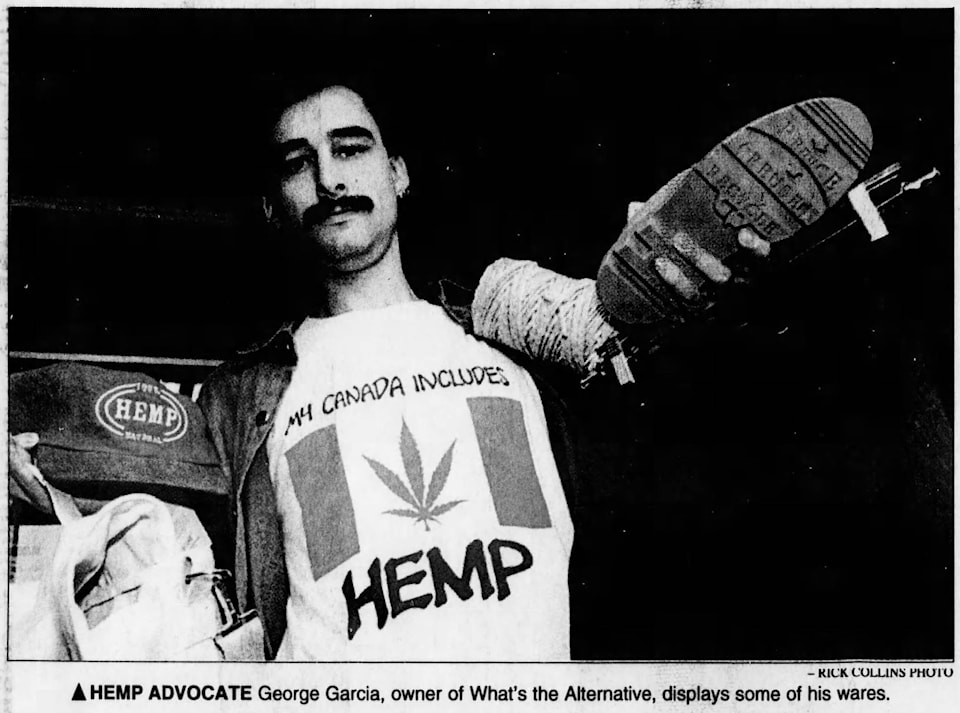Since first publishing on April 16, 1891 the Chilliwack Progress has been the newspaper of record in Chilliwack.
One hundred and 28 years later the Progress remains the longest continuously published newspaper in British Columbia. With the addition of a thriving digital operation anchored by theprogress.com, the Progress delivers more news to more people than ever before.
‘From the Progress Archives’ is a journey into the past, to see what was making news decades ago.
—————————————————————————————
Headline: A forest of hemp
Date: March 13, 1996
Reporter: Pauline Martin
Save our natural resources, feed the world and get everybody working?
Hemp can do it, says George Garcia, proprietor of ‘What’s the Alternative.’
Garcia’s store has raised more than a few eyebrows since he started selling hemp clothing and accessories on Main St. two years ago.
And the most common question from inquiring customers remains: “Can you smoke these cloths?”
Garcia is quick to point out that hemp and marijuana share the same basic genetic makeup, but hemp won’t get you high.
“It’s like tomatoes, and cherry tomatoes; they’re the same, but different,” he says.
Garcia is a member of a growing movement to promote a hemp-friendly society, but not as radical as some advocates who sell seeds, and condone marijuana smoking in public.
You can find pipes, papers and paraphernalia at Garcia’s downtown shop, but nothing illegal. He says his biggest customers for water pipes and how-to manuals are over 30; younger people are more drawn to the clothes and jewelry. A few get their navels pierced there.
For sheer practical reasons alone, Garcia makes a compelling case for hemp.
The seed itself is surpassed only by soybean as the world’s most perfect food; the flower has been used medicinally for more than 3,000 years; and the fibre from its stalks can produce three crops of pulp a year that can be manufactured into clothing, fuel and earthquake resident houses – just a few of its 250,000 uses.
“I’d like to see hemp grown on the prairies on a massive scale,” says Garcia.
“Right now, farmers are going broke. If they grew hemp, they’d be going to Hawaii every Christmas.”
Locally, Garcia thinks Fraser Valley Foods would make an idea hemp processing plant.
Globally, he says it could save non-renewable resources and replace fossil fuels.
It also makes a fine pair of shoes, including a new Adidas sneaker appropriately named ‘The Hemp.’
Garcia says there’s only about a dozen licensed hemp growers in Canada right now, and the product they raise is gathered and studied by the government.
But it’s not just government that’s interested in hemp’s potential, and making the most of a renewable resource.
“Any forest company would be foolish not to look at this with an open mind,” says Scott Alexander, a spokesman for MacMillan Bloedel.
“Politically, it’s a hot potato,” says Alexander. But practically, houses built of hemp in France have proven to be a viable option in countries that can’t grow trees.
Alexander says MacBlo has studied hemp for years, but there are commercial and environmental problems that make it impractical at this time.
“That’s not to say we’ve stopped looking,” said Alexander.
After all, what’s the alternative.
